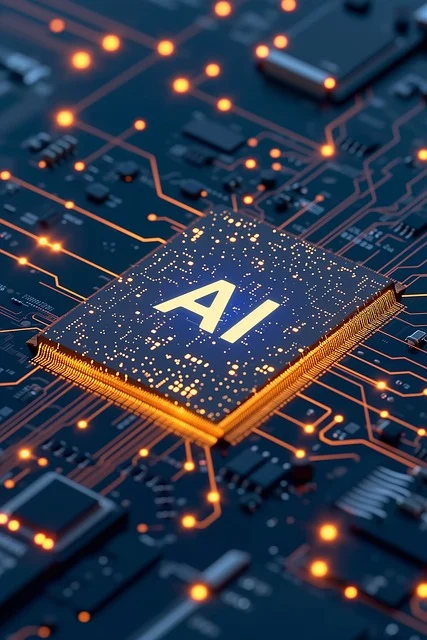Introduction of Artificial intelligence
Artificial intelligence can perform tasks that often require human intelligence. These characteristics include experiential learning, natural language understanding, pattern recognition, problem solving, and decision making.
History and development
The concept of AI has its origins in ancient mythology and early ideas about automated machines, but the modern field was founded in the 1950s by pioneers such as Alan Turing and John McCarthy. Universal AI is “a machine that can imitate human intelligence” and McCarthy coined the term “artificial intelligence”.
Types of Artificial Intelligence
01 Based on Capabilities
Weak AI: It works in a small space and cannot be expanded beyond the specified size. Examples of this include virtual assistants like amusement park activity recommendations, and image recognition systems.
Strong AI: This type is advanced artificial intelligence that can observe, learn, and use intelligence in various tasks just like humans. At this stage, the abstract philosophy is only conceptual and has not yet been fully realized. Super intelligent AI: This type of imaginative AI will surpass human intelligence in all areas including problem-solving, and social intelligence.
02 Based on Functionalities
Self-aware AI: Self-aware AI would be conscious and aware of itself, understand its own existence, and may have its own intentions and goals.
Limited memory: This is often used in applications such as autonomous vehicles, where decisions must be made based on information gathered from sensors and historical data.
Autonomous machines: AI systems can only operate in specific domains and do not have the ability to remember or use past experiences to make future decisions. They perform predetermined tasks, such as IBM’s Deep Blue playing chess.
03 Based on Techniques
Machine learning that uses multi-layer neural networks to analyze different types of data. It is very efficient at processing large amounts of unstructured data such as images and text.
Natural language processing: This field deals with the interaction between computers and natural language. It allows machines to understand, interpret, and process human language. Examples include chatbots and translation services.
Expert models: These are artificial intelligence systems that mimic experts to make decisions in specific situations, such as medical tests or financial transactions.
Robotics: Artificial intelligence is used on robots to perform a variety of physical tasks, from automated tasks to autonomous robots and autonomous vehicles.
Also more : VPN Switch
Advantages
Efficiency and automation: AI can increase efficiency and reduce human errors by automating repetitive and mundane tasks. This is especially important in industries such as manufacturing, logistics, and data entry.
Data analytics: By quickly processing and analyzing large amounts of data, AI can discover patterns and insights that humans may miss.
All time availability: AI systems can operate continuously, providing continuous support and service around the clock. This is useful for customer service and tracking systems.
Personalization: AI increases user satisfaction by tailoring recommendations and experiences to individual preferences.
Decision support: AI helps make data-driven decisions by providing predictive analysis and forecasts. This helps companies and organizations make more informed choices.
Improved accuracy: In some applications, AI can achieve greater accuracy than its human counterparts. This is evident in areas such as medical imaging, where artificial intelligence can help identify abnormalities with higher accuracy.
Cost savings: AI can bring significant cost savings to businesses by automating processes and increasing efficiency. Innovative solutions: AI will spur innovation by enabling new technologies and previously impossible solutions. This includes advances in areas such as autonomous vehicles, natural language processing, and robotics.
Scalability: AI systems can scale to handle more tasks or data, making them suitable for expanding businesses and applications.
Accessibility: AI can increase accessibility for people . For example, speech recognition and natural language processing can help people with visual or motor disabilities.
Improving research capabilities: AI speeds up research by analyzing data and simulating experiments, leading to faster discoveries and advances in science and technology.
Disadvantages
Job losses: Jobs may disappear in many sectors due to automation and artificial intelligence. Roles with repetitive tasks are particularly vulnerable, leading to unemployment and economic inequality. This can lead to unfair treatment and discrimination in areas such as employment, lending and law enforcement.
Risks: AI technologies, the collection and analysis of personal data may lead to unauthorized access and misuse.
Security threats: AI systems can be vulnerable to hacking and misuse.
Reliance on technology: Over-reliance on artificial intelligence systems can lead to a decline in critical thinking and problem-solving skills. It can also make societies more vulnerable to technological failure.
Ethical issues: The use of AI raises many ethical questions, such as the ethics of using AI in warfare or the implications of AI decision-making in sensitive areas such as healthcare and criminal justice.
Economic inequality: Big companies and the wealthy will benefit more from advances in artificial intelligence, which may lead to a widening of the gap between the rich and the poor.
Loss of the human touch: In fields such as customer support or healthcare, AI can replace human interactions that provide empathy and nuanced understanding, resulting in an impersonal experience.
Unintended consequences:
AI technologies can sometimes lead to unexpected or unwanted results. This is especially true for complex systems, where it is difficult to predict all possible interactions and outcomes.
Lack of accountability:
Accountability for decisions made by AI can be difficult to establish. When an AI system makes a harmful decision, it is often not clear who should bear the responsibility the developer, the user, or the AI itself.
